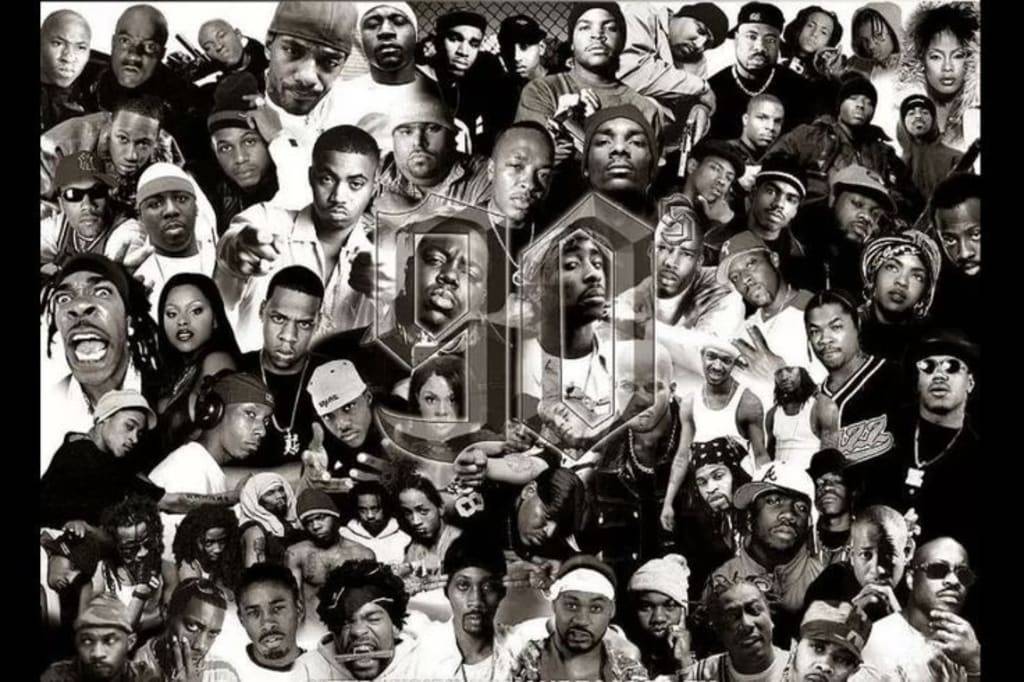Hip-hop isn’t just music-it’s a pulse, a movement, a battlefield where words cut deeper than steel and pride reigns supreme. Born in the gritty streets of the Bronx and carried across continents, it’s a culture where competition isn’t optional; it’s the oxygen that keeps it alive. A riveting new documentary on YouTube, Hip-Hop Beefs: The Feuds That Defined a Culture, plunges into the heart of this world, unraveling the rivalries that didn’t just entertain millions but carved the genre’s jagged edges into history. With raw footage, insider voices, and a lens that zooms beyond the headlines, this film is a deep dive into the clashes that made hip-hop what it is today.
First up is the feud that looms like a shadow over the genre: Tupac Shakur versus The Notorious B.I.G. This wasn’t a mere spat-it was a seismic rupture that split hip-hop into warring factions, East Coast versus West Coast, in a saga that still haunts the culture. The documentary opens with this heavyweight clash, tracing its origins to a mix of bruised egos, label power plays, and a media eager to turn whispers into wildfires. Tupac, the West’s rebellious poet with a voice like a Molotov cocktail, and Biggie, the East’s smooth-talking titan whose rhymes flowed like velvet over concrete, started as peers-some say friends-before fate and circumstance drew battle lines. The film unearths rare clips: Tupac’s fiery rants at Death Row Records, Biggie’s cool deflection in interviews, and the infamous 1994 shooting at Quad Studios that Tupac blamed on Biggie’s camp, though evidence never solidified the claim. What followed was a torrent of diss tracks-“Hit ’Em Up” from Tupac, a venomous war cry; “Who Shot Ya?” from Biggie, a chilling coincidence or calculated jab, depending who you ask. The documentary doesn’t pick sides but lays bare the escalation: how Suge Knight’s Death Row and Sean “Puffy” Combs’ Bad Boy Records turned artists into soldiers, how coastal pride morphed into a deadly vendetta. The end came too soon-Tupac gunned down in Las Vegas in September 1996, Biggie felled in Los Angeles six months later, both murders unsolved. The film lingers on the aftermath: a generation mourning, a genre forced to stare at its own fragility.
But the story doesn’t rest there. The documentary shifts to the cerebral slugfest between Jay-Z and Nas, a rivalry that swapped street heat for lyrical warfare. By the early 2000s, Jay-Z was the brash kingpin of Roc-A-Fella, his empire built on hustle and razor-sharp bars. Nas, the Queensbridge sage, wielded a pen like a philosopher’s sword, his debut *Illmatic* still a sacred text. Their beef ignited at 2001’s Summer Jam, where Jay unveiled “Takeover,” a track that mocked Nas’s career arc with surgical cruelty-“Four albums in ten years, n***a? I can divide, that’s one every let’s say two.” Nas countered with “Ether,” a sonic gut punch that didn’t just diss Jay-it aimed to erase him, calling him out from his street cred to his personal life. The film digs into the stakes: this was New York’s throne at play, a clash of styles-Jay’s flashy pragmatism versus Nas’s introspective grit. Beyond the tracks, the documentary unearths radio freestyles, fan reactions, and the moment they buried the hatchet onstage in 2005, a truce that proved hip-hop could heal. Their rivalry didn’t just entertain-it elevated the art form, forcing both to sharpen their quills and leaving fans with classics that still resonate.
Then there’s the raw, unpolished chaos of 50 Cent versus Ja Rule-a feud that felt less like a chess match and more like a street brawl. Ja Rule, with his gravelly croon and Murder Inc. backing, ruled the late ’90s airwaves, blending thug tales with pop sheen. Enter 50 Cent, a Queens hustler who’d survived nine bullets and turned his pain into platinum. Their beef kicked off in 1999 over a stolen chain, spiraling into a tangle of diss tracks, club confrontations, and petty stunts-like 50 buying out Ja Rule’s concert seats in 2000 just to leave them empty. The documentary captures the venom: 50’s “Wanksta” sneered at Ja’s softened image, while Ja’s “Loose Change” slung mud back, dragging 50’s crew into the fray. It’s a tale of egos unbound, fueled by street codes and a hunger to dominate. The film doesn’t flinch from the ugliness-lawsuits, arrests, a 2000 studio stabbing tied to their camps-but it also shows how 50’s relentless taunts buried Ja Rule’s career, a reminder of hip-hop’s brutal Darwinism.
What lifts Hip-Hop Beefs above a mere recap is its hunger for context. Why did these feuds burn so bright? The documentary points to the ecosystem: labels like Death Row and Bad Boy profiting off chaos, DJs amplifying every slight, and a fanbase that turned rivalries into blood sport. It explores the cultural undercurrents-how the East-West divide mirrored America’s own fractures, how Jay and Nas’s battle echoed hip-hop’s shift from underground to mainstream. The film’s visuals match its depth: shaky camcorder shots of Tupac in the studio, Jay-Z smirking at a press junket, 50 Cent prowling Queens-all woven with a narration that’s crisp, urgent, and alive.
These feuds weren’t just noise-they were crucibles. Tupac and Biggie’s deaths jolted hip-hop into maturity, Jay and Nas redefined its artistry, and 50 Cent’s rise cemented its commercial might. Streaming now on YouTube, Hip-Hop Beefs: The Feuds That Defined a Culture isn’t just a nostalgia trip-it’s a testament to a genre forged in fire, where every clash left scars and anthems in equal measure. For fans old and new, it’s a must-see window into hip-hop’s wild, unbreakable soul.



